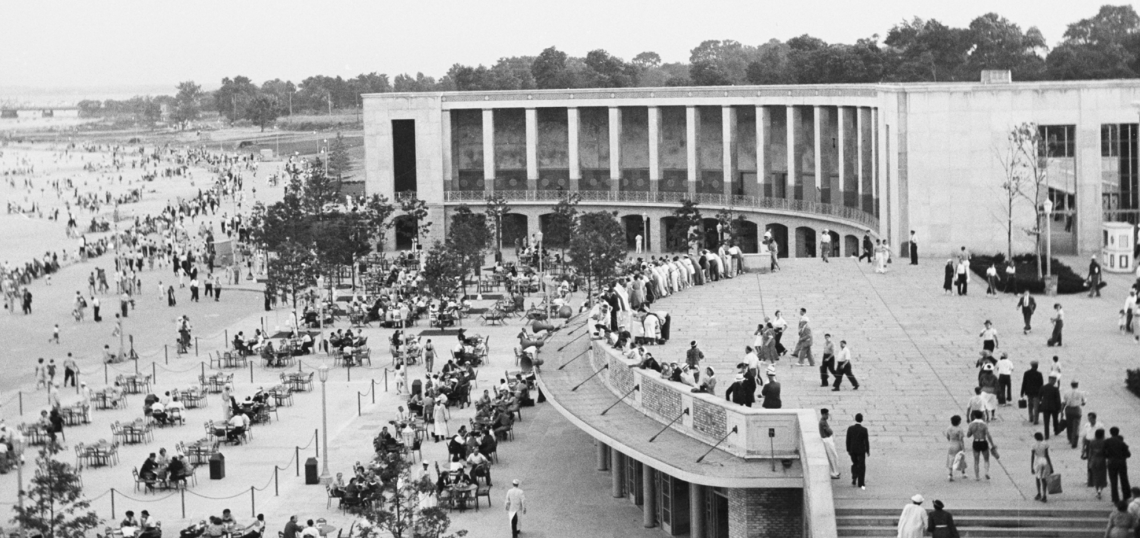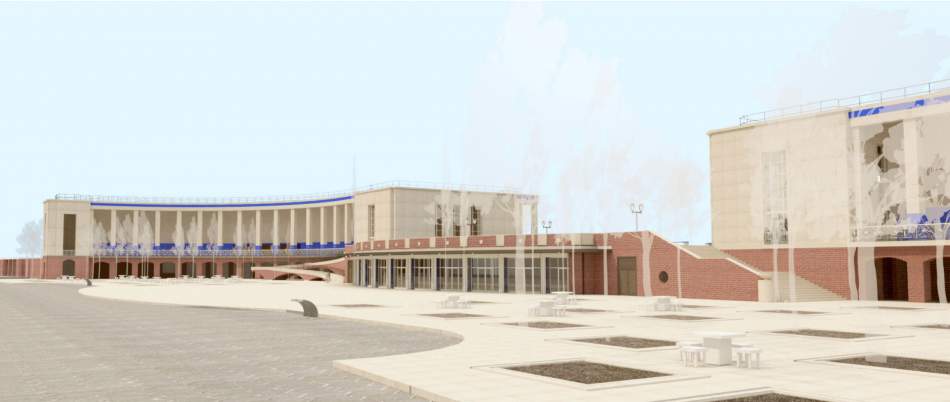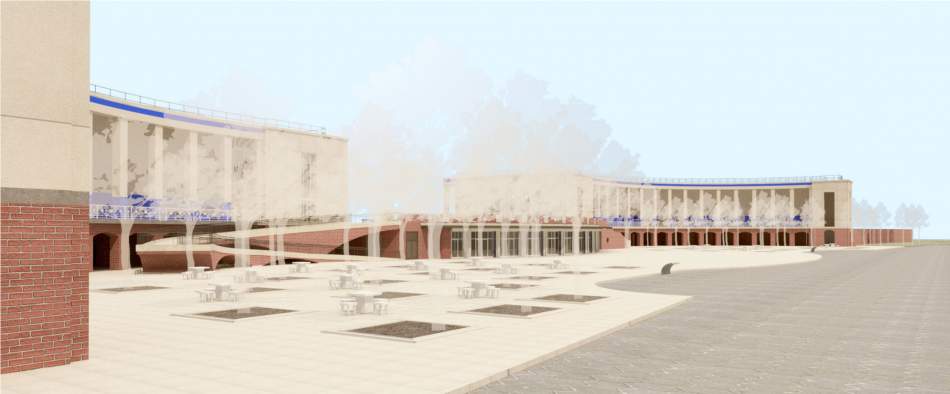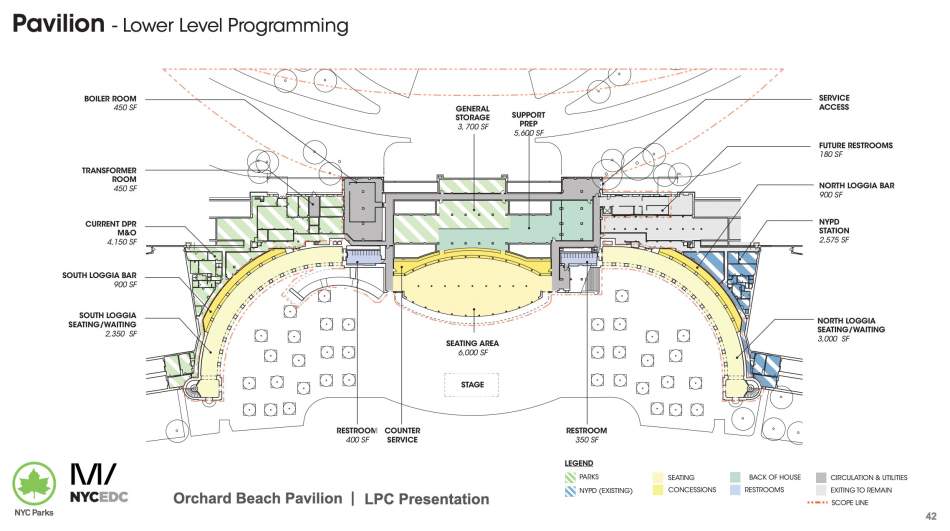Update May 4, 2021: The Landmarks Preservation Commission unanimously approved the Orchard Beach Pavilion reconstruction proposal. Commissioners only requested the applicants work with city staff to minimize the appearance of HVAC systems and railings.
A plan to revitalize an important piece of 1930s NYC architecture is finally moving forward.
Next Tuesday, the New York City Economic Development Corporation, the Department of Parks and Recreation, and Marvel will stand before the Landmarks Preservation Commission to present their proposal for the reconstruction of the historic Orchard Beach Pavilion.
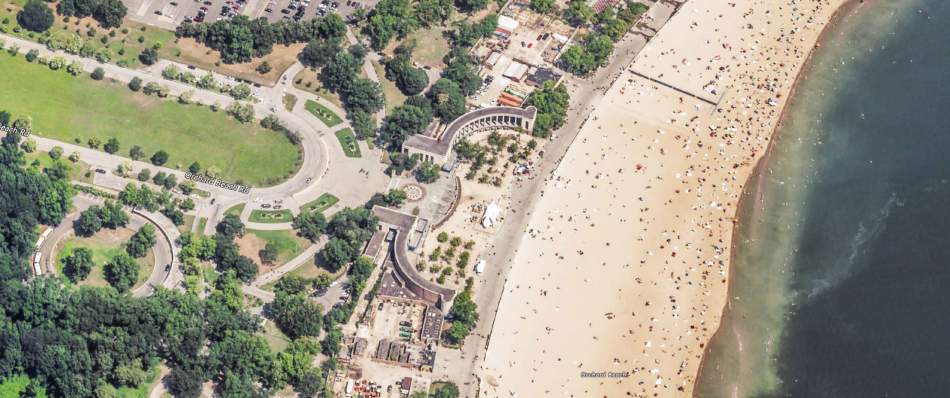 Marvel | NYC EDC | NYC Parks & Rec
Marvel | NYC EDC | NYC Parks & Rec
Located along Orchard Beach, a 1.1-mile-long stretch within Pelham Bay Park in the Bronx, the epic structure, once distinguished by its striking columns, limestone cladding, bright blue tiles, and terrazzo flooring, has long been in severe disrepair.
While talks to restore the pavilion have been ongoing for the better part of the past decade, efforts to bring the plan to fruition have only picked up steam in the last few years.
Bronx Borough President Ruben Diaz Jr., who grew up using the beach, has been rustling up funding at both the local and state level to pay for the pavilion's $75 million restoration.
"Orchard Beach was everything for someone like me,” Diaz shared with amNY in 2019. “Other than going to Puerto Rico, we didn’t have the means to go on vacation.”
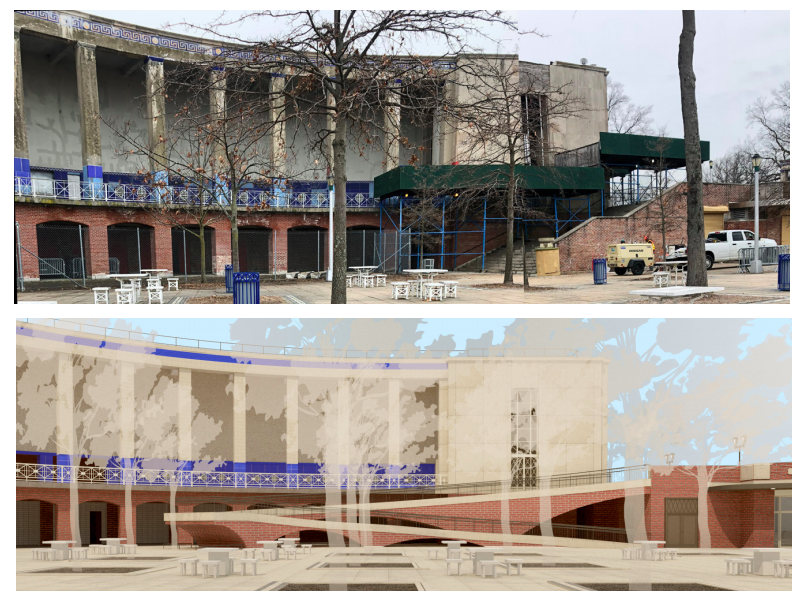 Marvel | NYC EDC | NYC Parks & Rec
Marvel | NYC EDC | NYC Parks & Rec
The updates shown in the team's proposal are understated but meaningful and include restoring and reconstructing the main bathhouse pavilion structure (including the upper and lower loggias, waiting rooms, and the cafeteria space); restoring architectural ornaments, terracotta, and lighting fixtures; restoring the intended circulation while ensuring ADA accessibility; providing concessions, community gathering space, and rentable areas; and limiting the structure's vulnerability to floods.
Officials hope the revamp will reinstate the beach's title as "The Riviera of the Bronx."
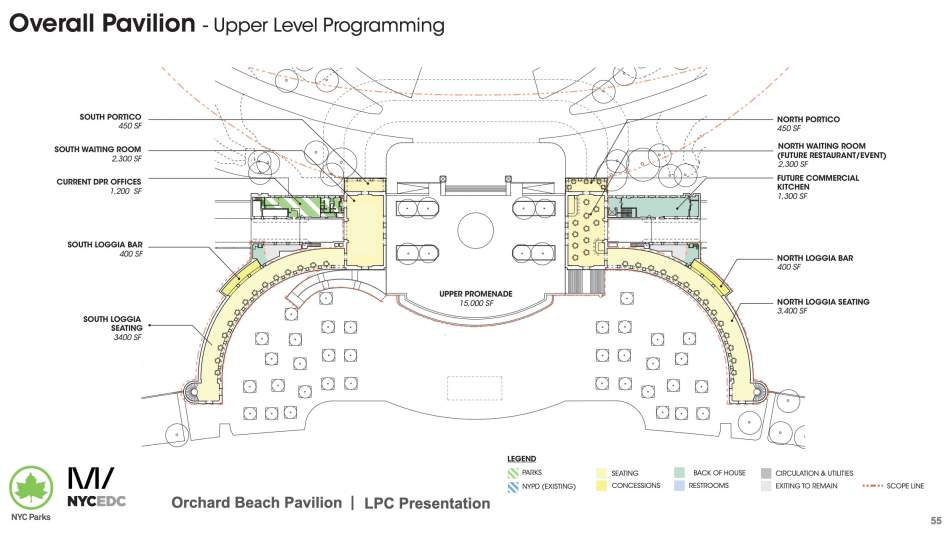 The proposed new programming | Marvel | NYC EDC | NYC Parks & Rec
The proposed new programming | Marvel | NYC EDC | NYC Parks & Rec
The much-loathed (and, to be sure, sometimes admired) former city Parks Commissioner Robert Moses hired architect Aymar Embury II for the design in 1934. Embury followed the “Federal Moderne” style, a mode typical of public buildings erected in the 1930s under the Works Progress Administration (a New Deal program).
Moses' vision saw a span of beach hugged by an elegant 1,400-foot-long by 250-foot-wide bathhouse flanked by two loggias and a promenade offering viewing terraces, concessions, picnic groves, game areas, and playgrounds. In true Moses fashion, the destination would also be served by an 8,000-car parking field.
The Orchard Beach Pavilion took roughly two years to construct and opened in two phases. The bathhouse was first to debut in the summer of 1936, while the main pavilion opened in the summer of 1937.
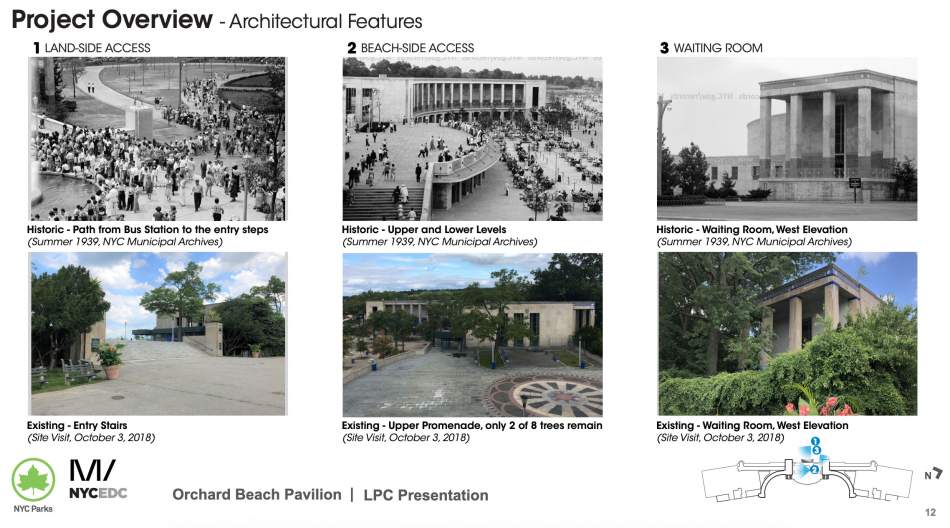 Marvel | NYC EDC | NYC Parks & Rec
Marvel | NYC EDC | NYC Parks & Rec
The pavilion was a wildly popular destination in the decades following, but poor upkeep allowed the structure to slip into disrepair. And although locals still frequent the beach in droves (an average 1.6 million a year), the pavilion is now largely gated off, standing as not much more than an artifact of another era.
Irrespective of its condition, the LPC designated the site a landmark in 2006, recognizing the beach project as “among the most remarkable public recreational facilities ever constructed in the United States.”
The redevelopment team will present their reconstruction plan to the LPC Tuesday, May 4. If all goes as intended, the pavilion could reopen as early as spring 2023.
- The Bronx (Urbanize NYC)




